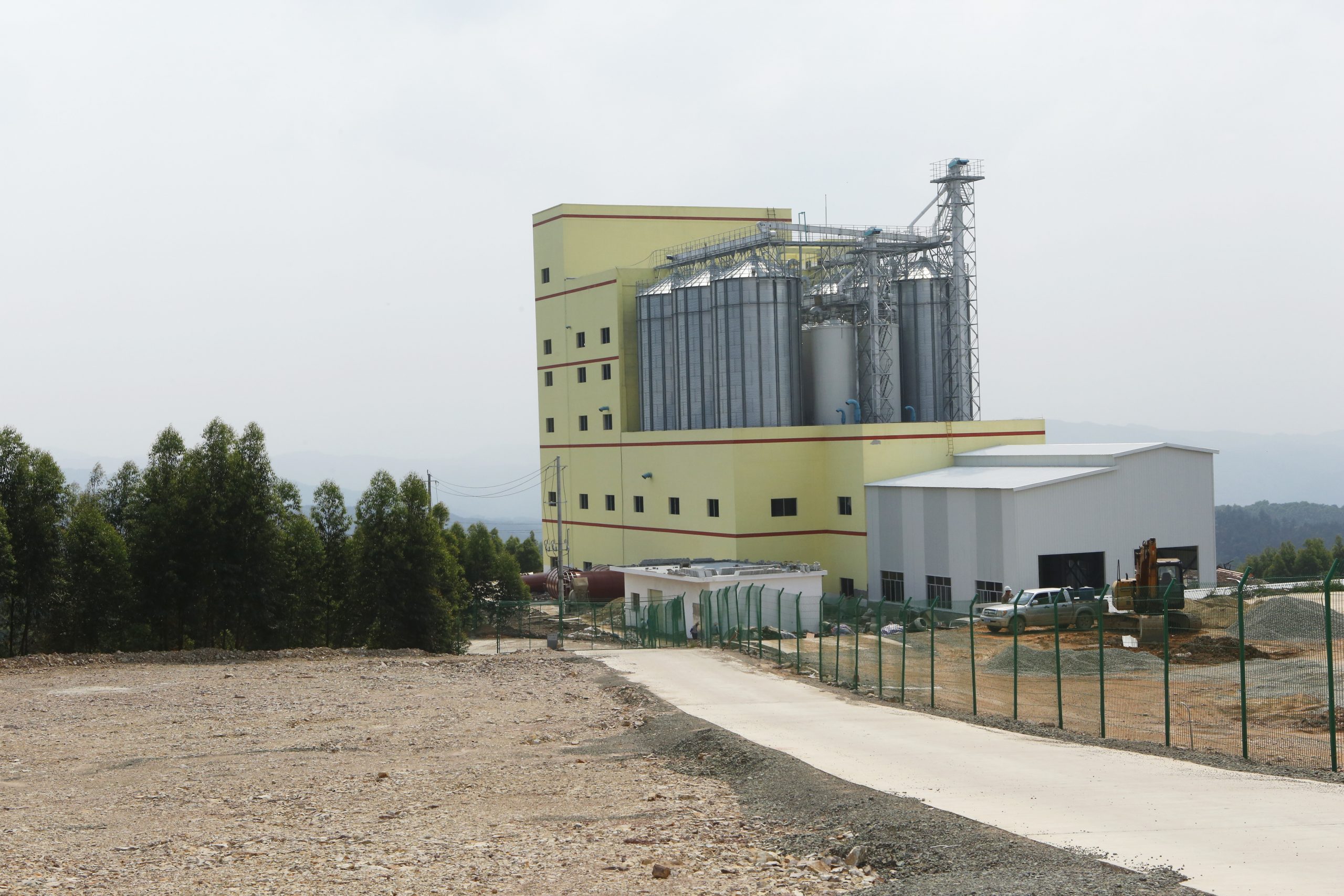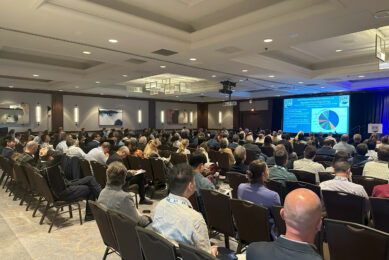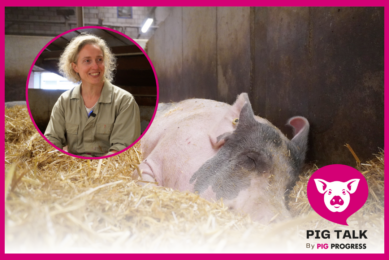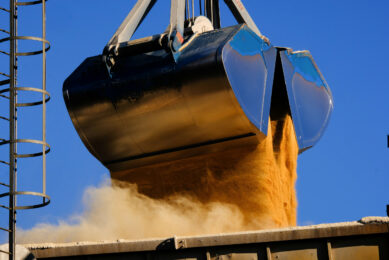Yangxiang: From feed to fertiliser

Yangxiang is a fully integrated pig farm in China. A new feed factory is almost ready and will produce feed for over 50,000 sows.
The new feed factory of the Chinese pig farm Yangxiang is a true eye catcher when you arrive on the company’s premises. The brand new steel silos reflect in the sun. A little further down the road, 4 large pig flats are situated. In the feed factory, technicians are still busy with the installation work. Outside, concrete constructions are being built to become new roads for the trucks that will deliver the raw materials to the new feed mill. Soon, the Chinese want to start a trial run with this feed mill. The feed mill will produce feed for 6 pig flats, with a total of 58,000 sows. 2 of these vertical barns are already have animals inside (14,000 sows in total). To feed these animals, complete feed is temporally supplied from another Yangxiang factory. The feed is delivered in the silos that are temporarily placed in the new feed mill. The capacity of the factory is 85,000 tons of feed per year and the investment equals € 1.93 million.
Learn more about this storey building Chinese pig farm on Pig Progress.
11 different types of pig feed
It looks like there is no lack of money at this Chinese farm. The latest grinding and mixing machinery in the feed mill have been imported from a Swiss company, all aimed to produce high quality compound feed. The raw materials are purchased mostly on the futures market and are purchased in one go for all the pig farms. The main ingredients used in the pig feed are maize, soy, sorghum, barley and fishmeal. Most of the raw materials are sourced from the north of China, a part of the country known for their endless arable land. Only a limited volume of the raw materials is imported. The new feed mill will make 11 different feed formulations, including various different sow feeds, a prestarter for the suckling piglets and a boar feed for the nearby AI centre. There are 3 unloading pits at the factory. The grain is cleaned during unloading by the use of large fans in front of the discharge pit. These fans blow away the chaff before the grain ends up in the pit. The waste is collected and disposed separately. The finished product is blown to the stables via long pipes. There is no truck involved and this is beneficial for feed hygiene. Yangxiang implements a lot of measures to keep animal diseases out of the stables. The pigs get dry feed only and the sows drink water from drinking nipples.

Investments in manure processing
The pig business for this giant Chinese company is growing at a fast pace. The sow herd has grown to 90,000 animals in just a few years time. Not only does this mean more feed, but also more manure is produced. Yangxiang takes measures to process and dispose the manure. China has enforced strict environmental regulations since a couple of years to stop soil pollution. The rules relate to emissions, especially odour, but also to manure. The manure from the 6 pig flats goes to a central processor, which is currently under construction. The intention is to first separate the thick fraction from the liquid fraction. The thick part is sold as organic fertiliser. The thin fraction is cleaned to such an extent that it is discharged in the mountains around the processor. However, a permit is required for this. The huge manure basin is being built as well. All work is going fast at Yangxiang. When the pool is ready, the manure from the 2 pig flats can already be used, followed by the other flats that are currently under construction. The foundation for the processing installation is already there. From a hygiene point of view, there are 3 roads to the flats: 1 for the staff to work at the stables. Then there is a road where the piglets leave the farm and there is 1 road for the removal of the manure.
Learn more about this storey building Chinese pig farm on Pig Progress.











